Q
what is the fuel consumption for toyota hilux 2.4 diesel
The fuel consumption of Toyota Hilux 2.4 Diesel in Malaysia is typically around 8 to 10 liters per 100 kilometers. However, actual fuel consumption can be affected by different factors, such as driving habits, road conditions, vehicle load, and weather conditions. If you frequently start and stop in congested urban traffic, fuel consumption may be higher; while maintaining a stable speed on the highway, fuel consumption will be relatively lower.
Special Disclaimer: This content is published by users and does not represent the views or position of PCauto.
Related Q&A
Q
What is the difference between 2.8 L and 3.0 L Hilux?
In Malaysia, there is no 3.0-liter variant of the Toyota Hilux; instead, the models available feature a 2.8-liter engine, such as the 2023 Hilux Double Cab 2.8 Rogue AT 4WD and the 2023 Toyota Hilux GR Sport 2.8 AT. Taking these two 2.8-liter variants as examples, they offer more powerful performance compared to the 2.4-liter models, with the 2.8-liter engine delivering a maximum power of 204 PS, while the 2.4-liter engine reaches a maximum power of 150 PS. Additionally, the 2.8-liter models provide a maximum torque of 500 N·m, compared to 400 N·m for the 2.4-liter variants.
In terms of features, some versions of the 2.8-liter models come equipped with more advanced active safety technologies, such as lane-keeping assist, lane departure warning systems, active braking/safety systems, and forward collision warning—some of which are not available on select 2.4-liter models. Furthermore, the 2.8-liter variants also offer enhanced comfort features, such as 8-way power-adjustable front seats and upgraded air conditioning systems in certain versions.
When it comes to pricing, the 2.8-liter models are priced higher, with the 2023 Hilux Double Cab 2.8 Rogue AT 4WD retailing for RM 158,880 and the 2023 Toyota Hilux GR Sport 2.8 AT costing RM 169,080, both of which exceed the prices of their 2.4-liter counterparts.
Q
Which is better, Hilux or D-Max?
Both the Toyota Hilux and Isuzu D-Max have their unique advantages, making it challenging to simply declare one as better than the other. The Hilux, a model under the Toyota brand, is renowned for its reliability and durability, with many owners reporting that its mechanical structure is stable enough to handle various complex and harsh road conditions. Its extensive maintenance network makes post-purchase upkeep convenient; in remote areas, finding parts and repair services is relatively easy. The price range for the Hilux varies from RM 89,100 to RM 169,080, with multiple powertrain configurations available.
On the other hand, the Isuzu D-Max shines in terms of ride comfort and interior quality. Its interior design places a strong emphasis on ergonomics, offering comfortable seating and a smooth driving experience. If you frequently navigate challenging terrains and prioritize the vehicle's durability and stability, the Hilux is an excellent choice. However, if you place a higher value on driving comfort and interior quality, the D-Max may be more suitable for your needs.
Q
What is the best engine of Hilux ?
The Toyota Hilux offers various engine options, each with its own characteristics, so the “best” choice ultimately depends on individual needs. The 2.4-liter diesel engine, such as that found in the 2023 Toyota Hilux Single Cab 2.4 MT 4WD, has a displacement of 2393 mL, delivering a maximum power of 150 PS, 110.3 kW, and a peak torque of 400 N·m. This variant is an excellent choice for users who prioritize fuel efficiency and everyday practicality, as it adequately meets the demands of daily commuting and general cargo transport on regular road conditions. Moreover, it is relatively affordable, with the Single Cab model priced at RM 103,880.
In contrast, the 2.8-liter turbocharged diesel engine provides a more robust performance, as seen in the 2023 Hilux Double Cab 2.8 Rogue AT 4WD. This engine boasts a displacement of 2755 mL, generating a maximum power of 204 PS, 150 kW, and a peak torque of 500 N·m. It handles complex terrains and heavy load requirements with ease, proving powerful strength in off-road situations or when towing heavy loads. Additionally, high-end versions equipped with this engine often come with more advanced features and luxurious interiors, but at a higher price point, such as the 2023 Toyota Hilux GR Sport 2.8 AT, which retails for RM 169,080.
If you frequently encounter challenging road conditions, have heavy loading needs, or seek a more powerful driving experience, the Hilux with the 2.8-liter engine would be a better choice. However, for those who primarily use the vehicle for everyday purposes, the 2.4-liter engine is more than sufficient and offers better value for money.
Q
What is the fuel range of a Toyota Hilux?
The range of the Toyota Hilux depends on several factors, including the specific model, driving conditions, and driving style. Generally, the Hilux has a fuel tank capacity of 80 liters. For instance, the official combined fuel consumption of the 2023 Hilux Double Cab 2.8 Rogue AT 4WD is 10.2 liters per 100 kilometers. Based on this fuel consumption and the 80-liter tank, the estimated range can be calculated as follows: 80 liters divided by 10.2 liters per 100 kilometers, which equals approximately 784 kilometers.
As another example, the official combined fuel consumption for the 2023 Toyota Hilux GR Sport 2.8 AT is 8.5 liters per 100 kilometers. Using the 80-liter tank, the range is roughly 80 divided by 8.5, resulting in approximately 941 kilometers. It is important to note that these are only estimates, and actual range may vary due to factors such as terrain, traffic conditions, and vehicle load.
Q
How many cylinders does a 3.0 Hilux have?
The commonly found 3.0-liter diesel version of the Toyota Hilux in the Malaysian market (model 1GD-FTV) features a 4-cylinder inline engine. Despite its larger displacement, Toyota has optimized the turbocharging (D-4D technology) and fuel injection system to ensure a balance between power output and fuel efficiency, delivering up to 204 horsepower and 500 Nm of torque. This engine is quite popular locally, particularly for commercial and off-road applications that require high load capacity or long-distance driving. Its durability and low maintenance costs are also key reasons why Malaysian consumers choose the Hilux.
It's important to note that, although it has a displacement of 3.0 liters, the four-cylinder design is lighter and more fuel-efficient compared to the older V6 engine, while also meeting modern emissions standards. For those seeking stronger performance, the Hilux's 2.8-liter version (also a 4-cylinder) is worth considering, as it has slightly different tuning but remains equally reliable. It is recommended to take a test drive to experience the low-end torque performance and consult with a dealer regarding regular maintenance to keep the engine in optimal condition.
Q
How much weight can the Toyota Hilux carry in its cargo bed?
The load capacity of the Toyota Hilux cargo bed can vary depending on the specific model, production year, and configuration. For instance, the Toyota Hilux Champ has a load capacity of 1,000 kilograms. Similarly, the standard Toyota Hilux sold in Malaysia is officially rated for the same 1,000-kilogram capacity.
It's important to note that exceeding the recommended load capacity can negatively impact the vehicle's handling, braking performance, and overall safety, as well as cause premature wear on components such as the suspension, tires, and brakes. Be sure to consult the vehicle's user manual or speak with a Toyota dealer to obtain the most accurate load capacity information for your specific vehicle.
Q
What is the fuel tank capacity of Hilux?
The Hilux features a fuel tank capacity of 80 liters. This relatively large tank allows for an extended range between refueling, benefiting all types of driving—whether it's for work purposes, such as reaching remote job sites, or for long road trips. With this 80-liter capacity, drivers enjoy greater flexibility and reduced frequency of visits to the gas station. It also instills confidence in drivers to travel longer distances without the constant worry of running out of fuel.
All models in the Hilux lineup come with this same fuel tank capacity, regardless of the specific configuration or engine option you choose.
Q
How many plugs does Hilux have?
In common models of the Toyota Hilux, such as the current 3.0L or 2.8L diesel versions, standard equipment typically includes one to two 12V power outlets (cigarette lighter sockets), with the exact number depending on the trim level. For instance, the base model may feature just one outlet located beneath the dashboard, while higher-spec versions, like the Hilux GR Sport, may add a second 12V outlet in the central console or rear seating area, facilitating the connection of in-car chargers, coolers, and other devices.
It’s worth noting that the latest generation of the Hilux has gradually introduced USB charging ports (Type A or Type C) to meet the power needs of modern electronic devices. However, traditional 12V outlets remain a vital feature for expanding equipment in commercial or outdoor settings, such as onboard air pumps and lighting systems. For those requiring additional power support, owners can consider aftermarket adapters or inverters (with due caution regarding circuit load safety), and it’s advisable to consult an authorized Toyota modification center to ensure compatibility.
Q
Is the Toyota Hilux powered by petrol or diesel?
The Toyota Hilux sold in Malaysia is powered by diesel. This fuel type offers several advantages that suit the Hilux's capabilities. Diesel engines generally provide higher torque at lower RPMs, which is beneficial for a vehicle like the Hilux, often used for tasks such as towing and off-road driving.
With diesel, the Hilux can handle heavy loads and challenging terrains more effectively. It also typically has better fuel efficiency compared to petrol engines in certain driving conditions, making it a practical choice for those who cover long distances or use the vehicle for work purposes. Moreover, diesel fuel is more readily available across Malaysia, ensuring convenient refueling for Hilux owners. This makes the diesel-powered Hilux a reliable and efficient option for Malaysian consumers who require a robust and versatile vehicle.
Q
What is the maintenance cost of Toyota Hilux?
The maintenance costs of the Toyota Hilux in Malaysia vary based on the model, usage, and service intervals, but overall, it falls within the affordable range. For common 2.4L or 2.8L diesel variants, routine maintenance is typically performed every 10,000 kilometers or 6 months (whichever comes first), with costs ranging from RM350 to RM600. This includes basic replacement items such as engine oil and filters.
For major service intervals, such as every 40,000 kilometers or every 2 years, which involve additional items like transmission fluid and brake fluid, costs can be around RM1,000 to RM1,500, depending on the specific inspection items involved. The Hilux’s durability and the lower dependency on imported parts (with some components produced locally) help keep long-term maintenance expenses manageable. However, maintenance related to key components such as the turbocharger or four-wheel drive system may incur slightly higher costs.
It is advisable to have regular maintenance performed at authorized Toyota service centers to ensure the validity of the factory warranty. Owners can also refer to Toyota Malaysia’s “Scheduled Service Guide” for more precise cost estimates. Additionally, performing simple tasks like replacing the air filter on your own can slightly reduce long-term expenses, but be sure to ensure that it does not affect the warranty terms.
Latest Q&A
Q
What is the lifespan of a Porsche Panamera 2024?
Under normal use and regular maintenance, the 2024 Porsche Panamera typically has a service life of 15 to 20 years or even longer. The exact lifespan depends on driving habits, maintenance frequency, as well as the climate and road conditions in Malaysia. As a high-performance luxury sedan, the Panamera incorporates Porsche's advanced engineering technology and high-quality materials. Its engine, transmission, and chassis have all undergone rigorous testing to ensure long - term reliability.
In Malaysia, the hot and humid climate may have a certain impact on rubber components and electronic systems. Therefore, it is recommended that car owners regularly check the cooling system, battery, and air-conditioning system, and strictly follow the Porsche official maintenance manual for upkeep to extend the vehicle's lifespan. Additionally, using original parts and lubricants that meet the specifications can significantly enhance the vehicle's durability.
It's worth noting that Porsche has a well - established after-sales service network in Malaysia, including professional technical support and original factory warranty services, which provide additional guarantees for car owners. For those car owners who aim for long-term use, the Panamera's resale value performs relatively well in the luxury car market, which also indirectly reflects its excellent durability and brand value.
Q
How fast is the Porsche Panamera in 2024?
The 2024 Porsche Panamera still impresses with its performance. Depending on the model, its acceleration capabilities vary. The top-of-the-line Panamera Turbo E-Hybrid is equipped with a combination of a 4.0-liter V8 twin-turbocharged engine and an electric motor, with a combined output of up to 680 horsepower. It can accelerate from 0 to 100 km/h in just 3.2 seconds and reach a top speed of 315 km/h, demonstrating the strength of a top-class luxury coupe. On the other hand, the entry-level 2.9-liter V6 model takes about 5.6 seconds to accelerate from 0 to 100 km/h, which is suitable for users who value daily driving comfort more.
For Malaysian car enthusiasts, the Panamera not only has strong performance but also features excellent chassis tuning and an active suspension system, enabling it to easily handle the local variable road conditions. Meanwhile, its hybrid version also conforms to the global energy-saving trend, meeting both performance and environmental protection requirements. It's worth mentioning that Porsche's PDK dual-clutch transmission and four-wheel drive system ensure the vehicle's stability when cornering at high speeds or on slippery roads, which is also one of the reasons why many Malaysian car owners favor it.
If you're considering buying one, it is recommended to choose the appropriate version according to your own needs and take a test drive at an authorized dealer to experience the perfect combination of its precise handling and luxurious interior.
Q
Is the Porsche Panamera 4 or 5 seater?
The Porsche Panamera offers two seating configurations in the Malaysian market: four-seat and five-seat options, depending on the model version and optional features. The standard Panamera usually comes with a 2+2 four-seat layout, with two independent rear seats to emphasize the sense of sporty luxury. However, consumers can also choose to install a three-person rear seat to turn it into a five-seat model, which is particularly practical in Malaysia where there is a high demand for family cars.
It's worth noting that the Panamera Executive Extended Edition has a wheelbase extended by 150mm, providing more spacious rear-seat space. Whether it's a four-seat or five-seat configuration, it can offer a more comfortable riding experience. For Malaysian consumers, if they often need to carry multiple passengers, it is recommended to clearly choose the five-seat configuration when placing an order, as it's quite difficult to retrofit later.
As a luxury sedan under Porsche that combines performance and practicality, the seat design of the Panamera fully considers the balance between daily driving and sporty handling. The four - seat version focuses more on luxury, while the five-seat version enhances the convenience for family outings. Before purchasing a car, it is recommended to visit the local Porsche Center in Malaysia to experience the differences in different seat configurations in person.
Q
Is the Panamera 2024 comfortable?
The 2024 Porsche Panamera excels in comfort, making it particularly suitable for the road conditions and climate in Malaysia. The standard-equipped adaptive air suspension system can effectively filter out road bumps, providing a smooth riding experience even on some uneven roads in Malaysia. Meanwhile, the upgraded seats of the new car are filled with higher-density foam and come with an optional massage function, which can relieve fatigue during long - distance drives. In terms of sound insulation, thanks to the double-layer glass and active noise reduction technology, it can maintain a quiet environment even in the busy urban areas or on the highways in Malaysia. In addition, for the tropical climate, the standard-equipped ventilated seats and four-zone automatic climate control system can quickly adjust the temperature inside the car. It's worth mentioning that although the Panamera is positioned as a sports coupe, it strikes a good balance between comfort and handling through the optional rear-wheel steering and PDCC dynamic chassis control system. For Malaysian consumers, this car can not only meet the daily needs of a family but also provide the refined driving and riding experience that a luxury brand should offer. It is one of the few models in its class that combines both sportiness and comfort.
Q
Is a 2024 Panamera RWD or AWD?
The 2024 Porsche Panamera offers two drivetrain versions in the Malaysian market: rear-wheel drive (RWD) and all-wheel drive (AWD). The specific configuration depends on the selected model and powertrain. For example, the entry-level Panamera and some plug-in hybrid models may feature a rear-wheel drive layout, while high-performance models like the Panamera 4S and Turbo come standard with Porsche Traction Management (PTM), an intelligent all-wheel drive system that enhances stability on slippery roads or during aggressive driving.
Given Malaysia's rainy climate and complex road conditions, the AWD version provides better grip and safety, making it particularly suitable for consumers who often drive long distances or seek dynamic handling. On the other hand, the RWD version may appeal more to buyers who prefer a pure driving experience or have budget constraints.
Porsche's all-wheel drive technology uses an electronically controlled multi-plate clutch to achieve real-time torque distribution between the front and rear axles, balancing fuel efficiency and performance. Meanwhile, all models in the lineup are equipped with the Porsche Stability Management (PSM) system to ensure active safety across different drivetrains.
It is recommended that potential owners choose based on their actual driving needs, budget, and driving habits. They should also visit an authorized dealer to test drive and compare the differences between the two drivetrains.
View MoreRelated News

2026 Toyota Hilux Interior Unveiled, and It’s Giving Prado Vibes
JohnAug 6, 2025
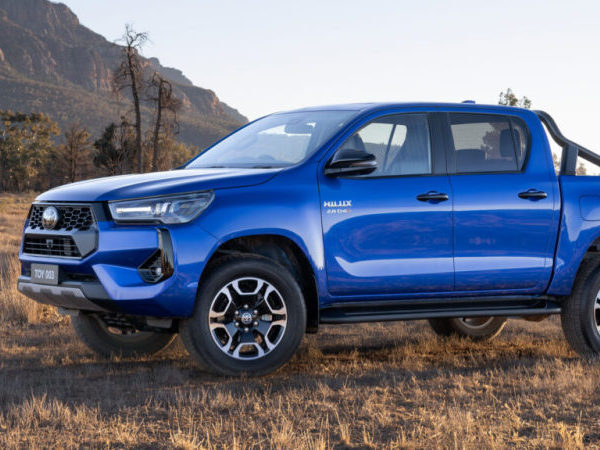
All-New 2025 Toyota Hilux Coming Soon: Here's What to Expect
JamesJun 24, 2025
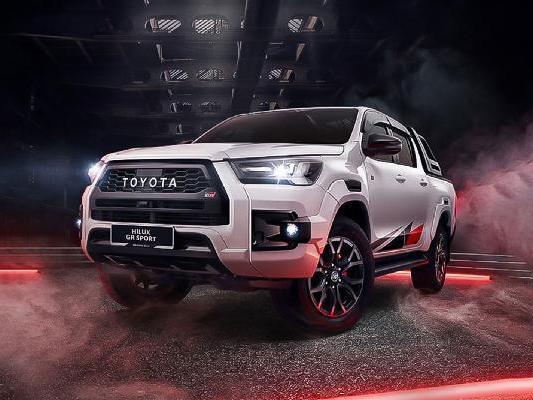
Toyota Hilux: A Buying Guide to Help You Choose the Right Model
MichaelMar 25, 2025
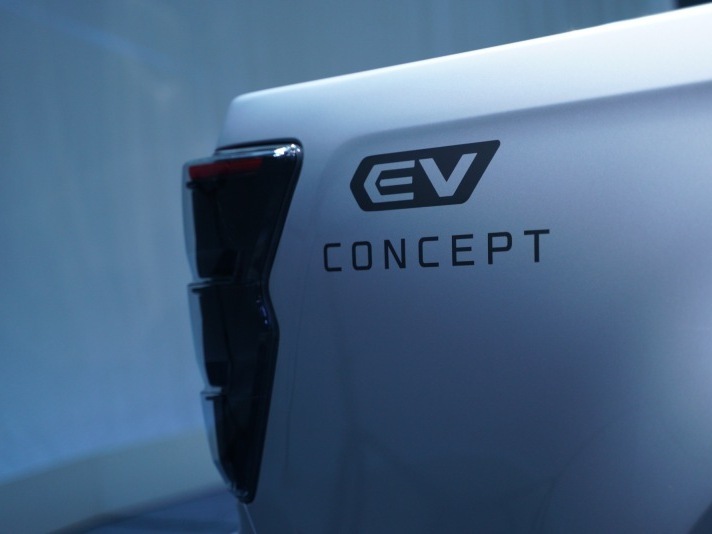
Reasons Why Pickups and SUVs Are Not Suitable for Electric Drive, Industry Secrets You Must Know Before Buying
JamesFeb 14, 2025
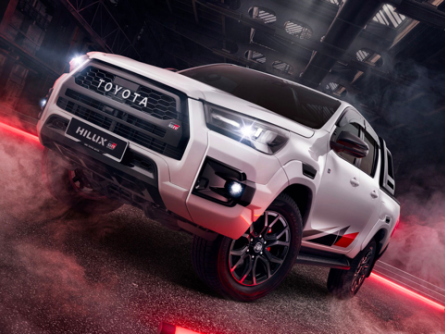
2023 Toyota Hilux GR Sport: Priced at RM 169,080
LienJul 4, 2024
View More



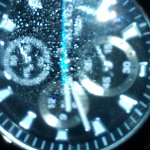






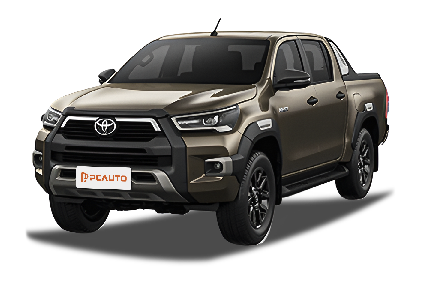




Pros
Cons